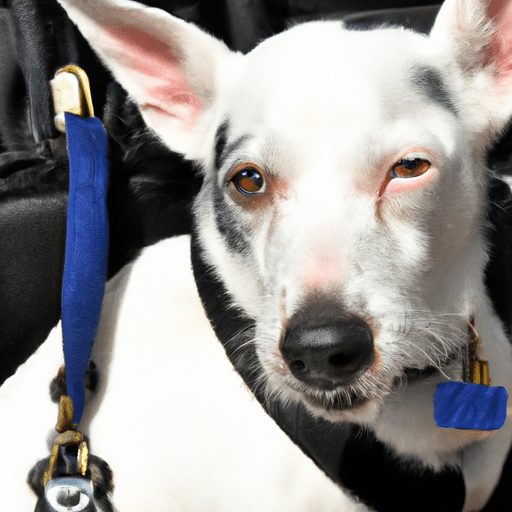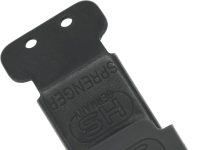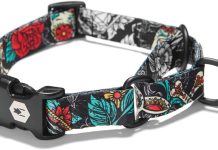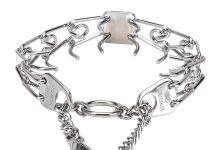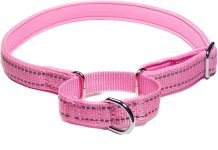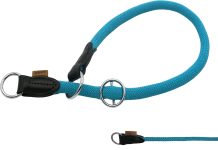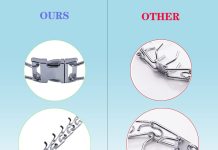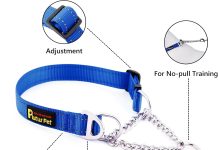As loving pet owners, we often find ourselves pondering over the best ways to provide the utmost comfort and care for our furry companions. And when it comes to our elderly dogs, their comfort and safety become even more crucial. One question that frequently arises is whether or not to invest in a harness for our aging canines. A harness can offer numerous benefits for our elderly dogs, from reducing strain on their delicate joints to enhancing their overall stability and balance. In this article, we will explore the importance of considering a harness for our elderly dogs and how it can greatly improve their quality of life. So, if you’re wondering if a harness is the right choice for your aging furry friend, sit back, relax, and let us guide you through this decision-making process.
The Importance of Harnesses for Elderly Dogs
As our beloved canine companions age, it becomes increasingly important to provide them with the necessary support and care to ensure their comfort and well-being. One essential tool in promoting the mobility and stability of elderly dogs is a harness. Harnesses offer several benefits, including maintaining mobility and stability, reducing strain on joints and muscles, and preventing injuries and falls.
Table of Contents
Maintaining Mobility and Stability
As dogs age, they may experience a decline in their ability to maintain their balance and coordinate their movements. This can make it challenging for them to navigate slippery or uneven surfaces, such as hardwood floors or stairs. By using a harness, we can provide them with additional stability and support, making it easier for them to move around with confidence.
Reducing Strain on Joints and Muscles
Elderly dogs often suffer from age-related conditions such as arthritis or muscle weakness, which can make it difficult for them to bear weight on their limbs. When using a harness, the weight is distributed evenly across the dog’s body, minimizing the strain on their joints and muscles. This can help alleviate discomfort and promote better mobility.
Preventing Injuries and Falls
As our furry friends age, their reflexes and coordination may not be as sharp as they once were. This can increase the risk of accidents, such as tripping or falling down the stairs. A harness provides a secure point of contact, allowing us to assist our elderly dogs in maintaining their balance and preventing potentially serious injuries.
Choosing the Right Harness
When selecting a harness for an elderly dog, it is essential to consider their specific needs, as well as ensure the proper size and fit. To make an informed decision, here are some key factors to keep in mind:
Consider Your Dog’s Specific Needs
Each dog is unique, and their needs may vary based on factors such as breed, size, and any existing medical conditions. For example, a dog with arthritis may benefit from a harness that offers additional padding and support. Consult with your veterinarian to determine the specific requirements of your elderly dog and choose a harness accordingly.
Selecting the Right Size and Fit
A properly fitted harness is crucial for achieving the desired benefits and ensuring your dog’s comfort. Measure your dog’s chest and neck circumference to determine the appropriate size of the harness. Additionally, ensure that the harness fits snugly without being too tight or restrictive, allowing for comfortable movement.
Opt for Adjustable and Padded Harnesses
Elderly dogs may have changing body shapes or sensitivities to pressure. Therefore, selecting a harness with adjustable straps allows for customization and ensures a secure fit. Additionally, choosing a harness with padding can provide extra comfort, especially for dogs with joint or muscle issues. Look for harnesses that have generous padding on the chest and back areas.
Types of Harnesses for Elderly Dogs
There is a wide variety of harness options available for elderly dogs, each with its unique design and benefits. Here are a few types of harnesses commonly used for elderly dogs:
Front-Clip Harness
Front-clip harnesses have the attachment point located on the chest area. This positioning helps distribute the force evenly if your dog pulls, preventing excessive strain on their neck and back. For elderly dogs prone to arthritis or neck injuries, a front-clip harness can be an excellent choice, as it encourages proper alignment and promotes controlled movement.
Back-Clip Harness
Back-clip harnesses feature the attachment point on the back of the dog. This type of harness is relatively easy to put on and take off, making it ideal for dogs who are not comfortable with the manipulation of their front legs. However, it is important to note that back-clip harnesses may provide less control and can potentially strain the neck or back if the dog pulls excessively.
Step-In Harness
Step-in harnesses are designed to be easy to put on, requiring the dog to merely step into the harness, and then securing it around the back or chest. This type of harness is particularly suitable for dogs with mobility issues or joint stiffness, as it minimizes the need for lifting or manipulating their limbs.
Vest-Style Harness
Vest-style harnesses offer full-body support, providing stability and control for elderly dogs. These harnesses typically come with multiple attachment points, allowing for customization based on the dog’s needs. The vest-style design also helps distribute the pressure evenly across the chest and back, reducing strain on the neck and shoulders.
Harness Training for Elderly Dogs
Introducing a harness to an elderly dog requires patience, positive reinforcement, and a gradual approach. Here are some tips to help you successfully train your elderly dog to wear a harness:
Introduce the Harness Gradually
For dogs who have never worn a harness before, it is essential to introduce it gradually to prevent any negative associations. Start by allowing your dog to sniff and investigate the harness while offering treats and praise. Gradually progress to placing the harness loosely on their back, rewarding them for calm behavior. Increase the duration and snugness of the harness over time until your dog is comfortable wearing it.
Reward-Based Training Approach
Using positive reinforcement techniques such as treats, verbal praise, and gentle petting can help create a positive association with the harness. Reward your dog whenever they show interest in or successfully wear the harness. This positive reinforcement will make the harness a desirable and exciting object for them.
Practice Short and Positive Training Sessions
Elderly dogs may tire easily, both physically and mentally. To keep the training sessions enjoyable and effective, keep them short and engaging. Gradually increase the duration as your dog becomes more comfortable with the harness. Remember to end each session on a positive note, with lots of praise and rewards.
Benefits of Using a Harness for Elderly Dogs
Using a harness for elderly dogs offers several advantages that contribute to their overall well-being and quality of life. Here are some of the key benefits:
Improved Control and Handling
A harness provides a secure point of contact, allowing owners to maintain better control and handling of their elderly dogs. This is especially important during walks or activities that require leash control, as it helps to minimize pulling and allows for gentle guidance.
Reduced Risk of Neck Injuries
Traditional neck collars can put strain on the neck and throat area, potentially leading to neck injuries or exacerbating existing conditions. By using a harness, the pressure is distributed across the chest and back, reducing the strain on the neck and minimizing the risk of injury.
Support for Dogs with Arthritis or Mobility Issues
Elderly dogs often suffer from age-related conditions such as arthritis, hip dysplasia, or muscle weakness. A well-fitted and padded harness can provide additional support and stability, making it easier for them to move around and alleviating any discomfort or pain.
When Not to Use a Harness for an Elderly Dog
While harnesses offer numerous benefits, there are certain situations where using one may not be appropriate. Here are a couple of instances when it is best to avoid using a harness:
Severe Respiratory Problems
Dogs with severe respiratory problems, such as brachycephalic breeds, may have difficulty breathing even without the added constraint of a harness. In such cases, it is best to consult with your veterinarian to determine the most suitable and comfortable option for your dog.
Skin Conditions or Infections
If your elderly dog has a skin condition or infection that requires localized treatment or frequent monitoring, using a harness may interfere with these processes. In such instances, it is important to prioritize the medical care needed and consult with your veterinarian for alternative solutions.
Tips for Using a Harness with an Elderly Dog
To ensure the safety and comfort of your elderly dog when using a harness, here are some helpful tips to keep in mind:
Regularly Inspect and Adjust the Harness
Regularly check the fit and condition of the harness to ensure it is still providing the necessary support. Dogs’ body shapes and sizes can change over time, so it’s crucial to regularly adjust the harness to maintain an appropriate fit.
Avoid Excessive Pulling
While a harness can help distribute the pressure evenly, it is still best to minimize pulling and excessive pressure on joints and muscles. Encourage your elderly dog to walk calmly and use positive reinforcement techniques to discourage pulling behavior.
Use the Harness in Conjunction with Other Mobility Support
Depending on the specific needs of your elderly dog, a harness may not be the only mobility support they require. Consider using ramps or stairs to assist them in navigating obstacles. Additionally, provide them with orthopedic beds or cushions that offer extra support and comfort during rest periods.
Additional Support Options for Elderly Dogs
In addition to using a harness, there are several other support options available to help elderly dogs maintain their mobility and comfort. Here are a few examples:
Ramps and Stairs
Installing ramps or stairs in your home can make it easier for elderly dogs to access higher surfaces such as beds or sofas. These assistive tools reduce the strain on their joints and muscles, ensuring a safer and more comfortable environment.
Orthopedic Beds and Cushions
Orthopedic beds and cushions are specially designed to provide support and relieve pressure points for elderly dogs. These products are often made with memory foam or other supportive materials that help alleviate discomfort caused by arthritis or joint pain.
Physical Therapy and Exercise
Engaging in regular physical therapy or exercise tailored to your elderly dog’s specific needs can help promote strength, flexibility, and overall well-being. Consult with your veterinarian or a professional canine physical therapist to create a suitable exercise plan for your furry friend.
Harness Recommendations for Elderly Dogs
When it comes to choosing a harness for your elderly dog, there are several reputable options available. Here are a few recommendations to consider:
Ruffwear Web Master Harness
The Ruffwear Web Master Harness is a popular choice among dog owners and is especially well-suited for elderly dogs. This harness offers a secure fit, adjustable straps, and a padded chest and belly panel for added comfort and support. It also features a handle on the back, providing an extra point of contact for assistance or control.
Kurgo Tru-Fit Smart Harness
The Kurgo Tru-Fit Smart Harness is designed with both safety and comfort in mind. It has five adjustment points, ensuring a proper fit for a range of body shapes. The padded chest plate helps distribute pressure and cushion sensitive areas, making it an excellent choice for elderly dogs with arthritis or mobility issues.
Julius-K9 PowerHarness
The Julius-K9 PowerHarness is known for its durability, practical design, and ergonomic fit. This harness features a sturdy handle on the back for better control and assistance when needed. It is also adjustable, allowing for a snug and secure fit that does not restrict movement or cause discomfort.
Conclusion
Investing in a harness for your elderly dog is a proactive way to ensure their safety, comfort, and mobility in their golden years. Harnesses offer numerous benefits, such as maintaining stability, reducing strain on joints and muscles, and preventing injuries and falls. By considering your dog’s specific needs, selecting the right size and fit, and opting for adjustable and padded harnesses, you can provide your elderly dog with the support they need to navigate their daily activities with ease. Remember to introduce the harness gradually, use reward-based training methods, and incorporate other supportive measures such as ramps and orthopedic beds for a holistic approach to their overall well-being. With the right harness and care, you can help your elderly dog enjoy a fulfilling and comfortable life for years to come.

